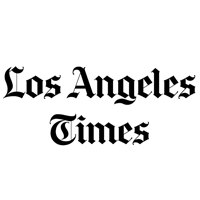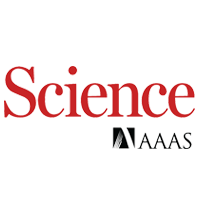Media Watch
UCI flood modeling framework reveals heightened risk and disparities in Los Angeles
Phys.org -
Flood risk in Los Angeles is vastly larger than previously indicated by federally defined flood maps, and low-income and marginalized communities face a significantly higher threat, according to a study led by researchers at the University of California, Irvine. … "We have developed an innovative, new flood risk modeling platform that, for the first time, enables household exposure and inequalities to be systematically quantified across major metro regions," said lead author Brett Sanders, UCI professor of civil and environmental engineering. Read More
Today’s Headlines: California
Los Angeles Times -
A major flood would hit Los Angeles Black communities disproportionately hard. A study from UC Irvine researchers does not predict when the next 100-year flood will occur. The paper, however, is among the first to examine how whiplashing weather extremes may affect the Los Angeles Basin, concluding that such a flood would cause far greater damage than federal emergency officials have forecast. [Subscription required, you can request an electronic copy of the article by sending an email to communications@uci.edu.] Read More
Aging Infrastructure May Create Higher Flood Risk in L.A., Study Finds
The New York Times -
Hundreds of thousands of people in Los Angeles could experience at least a foot of flooding during a 100-year disaster, a new scientific study has found, highlighting the hazards of aging infrastructure in America’s second-largest city. This is a much higher estimate of flood exposure in Los Angeles than the one produced by the federal government. … The discrepancy is explained, in part, because the new study takes a more realistic view of the city’s water infrastructure, said the report’s lead author, Brett F. Sanders, a professor of civil and environmental engineering at the University of California, Irvine. [Subscription required, campus-wide access provided by UCI Libraries. Sign-up here: https://guides.lib.uci.edu/nytimes] Read More
From Activism to Athletics, Here Are the ABCs of College Students
KNBC -
Nowadays, college students do much more than study and go to class. They build communities and strengthen the next generation. …UC Irvine senior and mechanical engineering major, Caden Ziegler, chose the university because of his opportunity to be involved in the shaping of the school. Students nowadays are finding more and more ways to not only shape the campus environment, but the community around them. "When there’s large movements, there is activism on campus, people are vocal," shared Ziegler. He goes above and beyond the call of the typical student. Behind the scenes, Caden does government research for a company in Laguna Hills. Read More
Major flood would hit Los Angeles Black communities disproportionately hard, study finds
Los Angeles Times -
Flooding from a storm event so severe that it occurs only once every 100 years would cause far greater damage to life and property in the Los Angeles Basin than federal emergency officials have forecast, according to UC Irvine researchers who warn also that Black and low-income communities would be hardest hit by the disaster. “We found that nearly 1 million people are living within areas that could be threatened by a 100-year flood,” said Brett Sanders, a professor of civil and environmental engineering. “That’s roughly 30 times more people at risk than what the Federal Emergency Management Agency suggests.” [Subscription required, you can request an electronic copy of the article by sending an email to communications@uci.edu.] Read More
A treasure hunt for microbes in Chile’s Atacama desert
ASBMB Today -
In 2020, a group of scientists from the United States described in PNAS a bacterium living within gypsum rocks that secreted a substance to dissolve the minerals around it, releasing individual water molecules sequestered inside the rock. “They’re almost like miners … digging for water,” says [Professor] David Kisailus, a chemical and environmental engineer at the University of California, Irvine, and one of the study’s authors. “They can actually search out and find the water and extract the water from these rocks.” Examples like these are just a taste of what Atacama’s microbes might teach us about survival at extremes, Kisailus says. Read More
Rewritten genetic code allows bacteria to fend off viral attacks
Science -
By partially rewriting the genetic code in bacteria, two groups of researchers have found they can thwart invading viruses, which must hijack the microbes’ genetic machinery to replicate. … Such recoding might help prevent viral outbreaks in factories that use bacteria to churn out drugs or other products. … The bacteria could also help biologists study the evolution of the genetic code itself, says synthetic biologist Chang Liu, [professor of biomedical engineering] of the University of California, Irvine. Now, researchers can “ask why the genetic code is the way it is.” Read More
Inside the space start-up that plans to fling satellites to orbit
Inverse -
SpinLaunch may face a major obstacle up in the air because it does the opposite of a standard rocket, says Julián Rimoli, a professor of aerospace and mechanical engineering at the University of California, Irvine …. “I would expect this to get really hot,” Rimoli says, similar to how space capsules create mini-fireballs upon reentering the Earth’s atmosphere. That heat could prove disastrous for SpinLaunch’s precious cargo. … One of the biggest current unknowns: how SpinLaunch payloads will fare at much higher speeds, Rimoli says. Read More
Beach Erosion, Rising Seas Threaten Amtrak’s Second-Busiest Rail Line
Bloomberg -
Alternatives to track relocation include the construction of seawalls or other coastal “armoring.” Currently, 38% of the Southern California coastline is armored. But these techniques can end up blocking the natural replenishment of sand and hastening beach disappearance — a phenomenon that’s brought waves perilously close to the Surf Line in several sites. “You need a certain amount of sand in the system for it to work,” said Brett Sanders, a professor of civil and environmental engineering at UC Irvine. “It's like how you can’t run a car without oil in the engine.” Read More
New UCI Institute to Research Zero-Emission, Autonomous Vehicle Tech
Orange County Business Journal -
UCI has opened a new on-campus research facility to study zero-emission, autonomous and connected vehicle technology. … “HIMaC2 represents a collection of state-of-the-art research laboratories for conducting crucially important and highly innovative research in the future of transportation, energy and their interconnections,” UCI Vice Chancellor for Research Pramod Khargonekar said in a statement. “It puts UCI in the forefront of this emerging field leading to breakthrough discoveries, inventions and their translation for benefits to society.” [Subscription required, you can request an electronic copy of the article by sending an email to communications@uci.edu.] Read More









